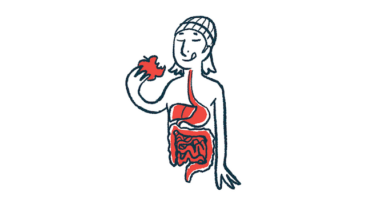Spontaneous aneurysms corrected in 2 brothers with kEDS: Case study
Both boys, plus another affected brother, had PLOD1 gene mutations

Two brothers with kyphoscoliotic Ehlers-Danlos syndrome (kEDS) had a spontaneous abdominal aneurysm, a ballooning of blood vessel walls, which was successfully corrected with surgery, according to a case report.
kEDS is one of 13 types of EDS, a group of genetic disorders that affect the connective tissues, which provide structure to skin, joints, blood vessels, and other tissues. Symptoms include hypermobile joints and fragile skin that bruises easily, not unlike other types of EDS.
“Our report underscores the importance of recognizing vascular risks in PLOD1-kEDS patients,” the researchers wrote in “Spontaneous celiac artery aneurysms in 13-year-old and 10-year-old brothers with PLOD1-related kyphoscoliotic Ehlers-Danlos syndrome,” which was published in the Journal of Vascular Surgery Cases, Innovations and Techniques.
Nearly all cases of kEDS are caused by mutations in the PLOD1 gene, which leads to a deficiency in an enzyme that modifies and strengthens collagen, the main connective tissue protein. Without this enzyme, connective tissue is weakened and those affected often develop a sideways curvature of the spine, or scoliosis, and kyphosis, that is, a hunched back.
Due to the fragile nature of blood vessels, kEDS patients are at an increased risk of life-threatening vascular complications, such as ruptures and aneurysms, which are the abnormal widening or ballooning of the blood vessel walls.
Here, researchers at the University of Western Ontario, Canada describe two brothers with kEDS who had spontaneous aneurysms.
Spontaneous aneurysms in brothers with kEDS
One boy, who had a history of various congenital and health issues, including scoliosis, joint hypermobility, and poor wound healing, was seen with abdominal pain in 2018 when he was 13. At birth, he had low muscle tone, undescended testes, and hip dislocations. In 2017, he underwent feeding tube insertion, but was unable to tolerate it and was hospitalized for nutritional support.
CT scans showed evidence of severe spinal curvature and an aneurysm in the celiac artery, a main abdominal vessel that supplies blood to various organs, including the liver, stomach, and spleen.
Within 24 hours, he developed severe abdominal pain and was given blood transfusions due to a marked drop in hemoglobin, the protein in red blood cells that carries oxygen. He had surgery to correct the aneurysm, which involved tying off, or ligating, the celiac artery.
After surgery, he had seizures, high blood pressure, and a blood clot in one of the deep veins in his body, called deep vein thrombosis, and was given treatment. Over a five-year follow-up, CT scans showed no further aneurysms and he went on to enroll in college.
In 2019, his 10-year-old brother, also diagnosed with kEDS, had severe upper abdominal pain after eating. He too had a history of low muscle tone, hip abnormalities, hypermobile joints, scoliosis, and poor wound healing. At age 7, he was treated for a blood vessel rupture in the right eye, which was complicated by a detached retina.
Like his brother, CT scans showed a celiac artery aneurysm without rupture, which was also repaired with surgery. His postoperative recovery was uneventful.
In April 2020, a follow-up CT scan found a pseudoaneurysm, that is, a false aneurysm caused by an injured blood vessel wall, at the ligation site. He had no symptoms, however, and the pseudoaneurysm was fixed with another surgery.
Follow-up CT scans showed no recurrence of the aneurysms after three years, although the boy’s kyphoscoliosis worsened. His ongoing care was overseen by a team of specialists, including a pediatric cardiologist, an orthopedic surgeon, a pediatrician, and an ophthalmologist.
The boys’ parents were first cousins, meaning they were the children of a brother and sister. Another son had been born with backward-bending feet, an undescended testicles, low muscle tone, and fragile skin. He also had a history of poor wound healing and kyphoscoliosis.
In genetic tests, all three brothers carried mutations in both PLOD1 genes, which they inherited from their carrier parents, confirming the kEDS diagnosis.
“The two cases presented in this report add to the limited body of reported cases describing vascular complications in individuals with PLOD1-kEDS,” the researchers wrote. “A critical need exists for systematic documentation of vascular complications and their management in patients with kEDS to advance our understanding and improve patient outcomes.”







